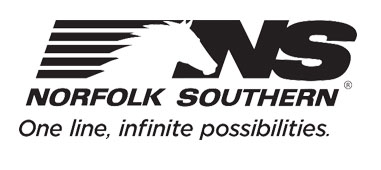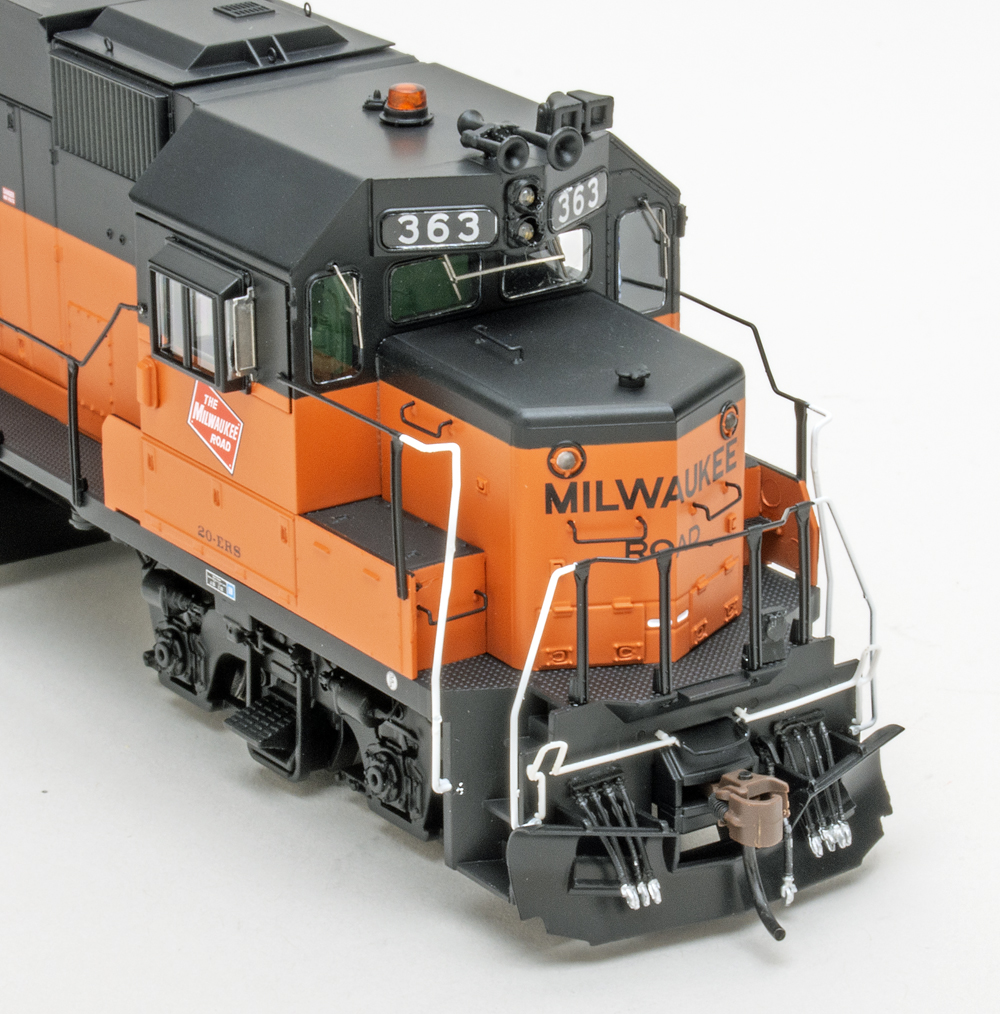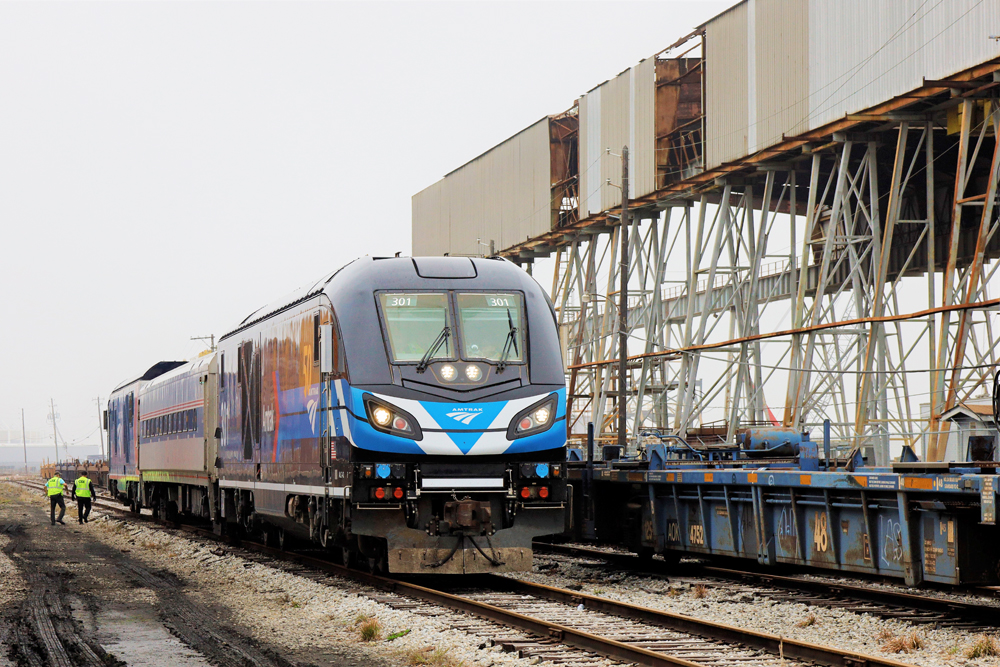The Murray & Murray law firm recently filed a class-action federal lawsuit against the Class I railroad for what they refer to as “one of the most macabre forms of environmental contamination, in the form of noise pollution,” the Sandusky Herald reports.
The pending lawsuit aims to quiet down noise originating from hump yard retarders, which the railroad installed in 2015 as part of a $160 million investment in the rail yard and its freight car capacity. The suit alleges that the railroad did not do anything to address the constant screeching originating from the retarders.
According to the Federal Railroad Administration, retarder noise is limited to 83 decibels, however the suit alleges that screeching from the retarders exceeds 100 decibels.
Two local residents are seeking unspecified compensation due to allegations of constant noise and a diminished value of their residential properties because of their proximity to the rail facility.
Norfolk Southern representative David Pidgeon did not respond to an email request from the Herald.
Moorman yard, formerly known as Bellevue yard, is the largest hump terminal on NS’ system and was previously a major freight car hub for the Nickel Plate, Pennsylvania and Norfolk & Western railroads.















The yard was there first, so why did these people buy or build so close to the yard?
It appears from the Google map that most of the land is/was farm land. There are some NEW homes built closer to the yard when the farm owners sold land. Possibly these new entitled landholders thought (or didn’t think) there would be much noise. Did they just assume everything would be peacefully quiet all of the time. Did they investigate what traffic patterns would be like? Did they visit the area at various times to see what noise levels would be? If the answer is no, then they shouldn’t complain.
This is yard is closer to U.S Route 20 then to 80 or 90.Have been thru Bellevue before
Yes John, realtors will lie to you or at best withold some things from the buyer same as car salesmen,
Let’s see what these same people say when the traffic on the Turnpike, a few miles to the north, gets crammed with tons more trucks if there are less trains going through Bellevue.
If the railroad could use the land for expansion why not?
I’ll agree that the railroad was there first but, I suspect many of you aren’t taking into account the large expansion of Bellevue several years back and the fact the yard is processing considerably more traffic now than in the past.
Before Bellevue expanded, the noise level may have been such that it didn’t bother people living nearby.
@Gerald Mcfarlane
“If people have a problem then the simple solution is sell your property and move…if you have to, sell it to the railroad as a buffer zone.”
I can’t really tell if that’s a joke or not. I’d love to see the meeting between someone trying to sell their home and railroad management – after management got done laughing (several minutes), i’m sure they’d offer DOZENS of dollars for those homes.
The railroads should be better neighbors. A 20′ concrete and metal noise abatement wall, like the ones use by the DOT next to the Interstate Highway, should be butted up against the bordering properties. That would solve several problems at the same time – hinder the trespassers, reflect the sounds back into the yard, and give the complaining homeowners something ugly to look at in ther back yard.
Yet, Interstates 80 and 90 make noise 24 hours a day….
There seems to be in its formative stages a campaign against the railroad industry that is based on extensions of environment laws. Earlier this year, The Backbone Campaign in the Pacific Northwest started whining about diesel exhaust, the by-product of what they call pollution from “deadly and toxic carbon fuel combustion.” For starters, they seek massive business and environmental policy changes and government involvement to electrify one or more BNSF line segments. And now comes this class action lawsuit against NS. I have not found the lawsuit on Lexis/Nexus, but I support this action will seek to apply case theories and case law established by residents near airports and under airplane flight patterns. As with airports, Bellevue residents likely bought their homes at a reduced value with full knowledge of the railroad yard’s existence. From monetary standpoint, it seems that the plaintiffs are seeking to raise their property values by forcing the railroad to reduce noise. From a strategy standpoint, these courtroom efforts might be seen as the tactics environmentalists have adopted to advance their causes while President Trump is in residence at 1600 Pennsylvania Avenue and while Republicans are firmly in control of the US House and US Senate.
What is the prescribed noise level and how is it measured? What are the noise levels measured in accordance to the prescribed method? How is the housing market in Bellevue? This looks to me like a money grab.
It is just a tax issue. The taxes paid are a lesser rate when near a railroad, and the lesser rate is based on the sale value which is usually less than a residence away from a railroad. Let them buy more expensive land away from the noise. Stop the noise, then double their land tax.
So how often to orders get screwed up?
Actually Mr. Berg, yes. McDonald’s after many attempts found a way to build a store in Freeport, ME. But heir drive-thru was so noisy that the town took them to court. The settlement was that there would only be one way communication. You can talk into the speaker but they can’t respond.
Who was their first, the railroad or the people? ANSWER: Railroad. They win they can do what needs to be done.
Mr, Marquette: Yes!
There are not a lot of homes in close proximity to the hump area of the yard. Most of the western portion of the yard is separated from homes by a large field, maybe by a quarter of a mile or more, You can probably check Ohio Rte 113 on Google and note the location of the yard in relation to the highway. East of Rte 4, which bisects 113, there are only some farms.
I would like some railroad sounds near my house.
@Dan Howard – I was being a bit sarcastic about the wall. Although $6 million is a negligible amount for noise abatement, the neighbors would then complain about the view, attributing it to loss of property value, and then about the graffiti that the wall would eventually acquire.
These people, who moved into the area knowing full well there was a rail yard here, just want to complain. If NS shut down the yard and sold it, then they would bitch about whatever future development ends up there, whether it be an airport, shopping center, or apartments. I’m with the majority of folks that think if they residents don’t like it, then they should sell out or bankrupt and move.
@Matt Hoffman…I don’t know about you, but as a life long railfan and student of railroads any sound that would come from a rail yard should I ever live next to one would be negligible. Even retarder screeching after a while would just fade into the background, most people get used to sounds that you hear constantly and pretty soon the human brain will just tune them out or they become background noise…and that includes aircraft flying overhead, trains running through the night and horn blasts. If people have a problem then the simple solution is sell your property and move…if you have to, sell it to the railroad as a buffer zone.
FYI in response to Mr. Conaway – you may not be aware that FHWA statistics indicate the average price of a highway sound wall is $30.78 per square foot. That would put a mile long, 20′ high wall at over $3 million. A quick Google Earth measurement shows the hump yard at just over a mile long – $6 million to put sound walls along both sides of the yard.
https://www.google.com/maps/@41.2923454,-82.7929189,4608m/data=!3m1!1e3?hl=en
A satellite view of the yard and its surrounding area.
Pretty sure that yard has been there, and been that noisy or worse a lot longer than 99& of the homes built within 2 miles of the yard. Did the realtor that sold you that house tell you the yard would be closing soon? Did they twist your arm until you agreed to buy that house? Was the realtor show you the house on a day that yard was down wind on a windy day or during a railroad strike?
Have that realtor sell your house.
I like trains too, but come on people – you have to admit that constant screeching from the retarders would really suck. While i’m not generally sympathetic to “nimbys”, I think they tend to act reasonably given their situation.
The suggestion that persons living close to a major railroad yard should simply pack up and move to a nicer neighborhood is completely ridiculous. Don’t you think they thought of that? Don’t you think the new screeching has had some effect on their ability to sell their homes?
If the railroad has done something recently that negatively effects the value of adjacent properties in a significant way, maybe they are liable.